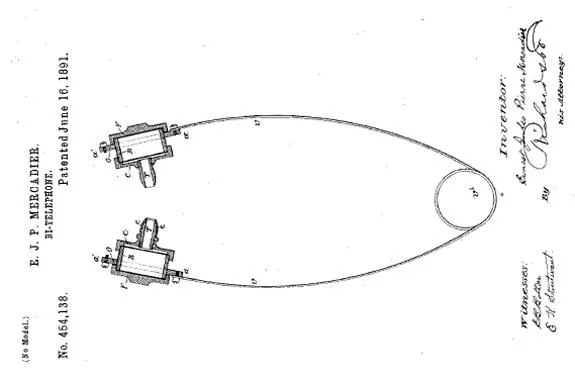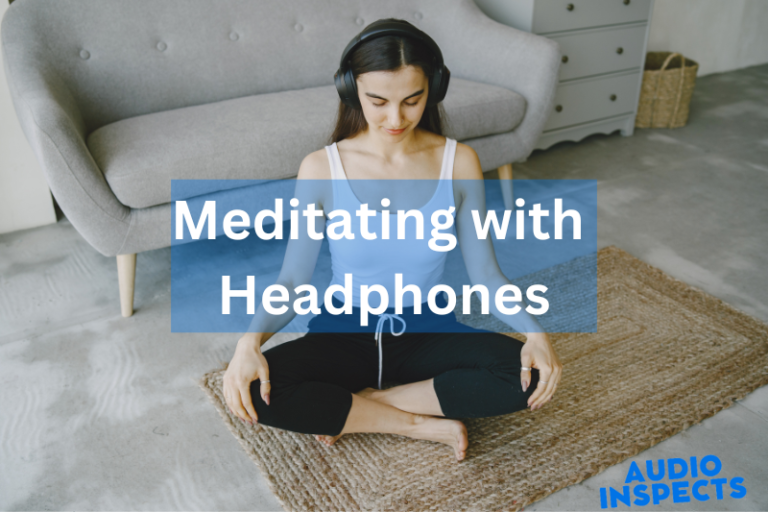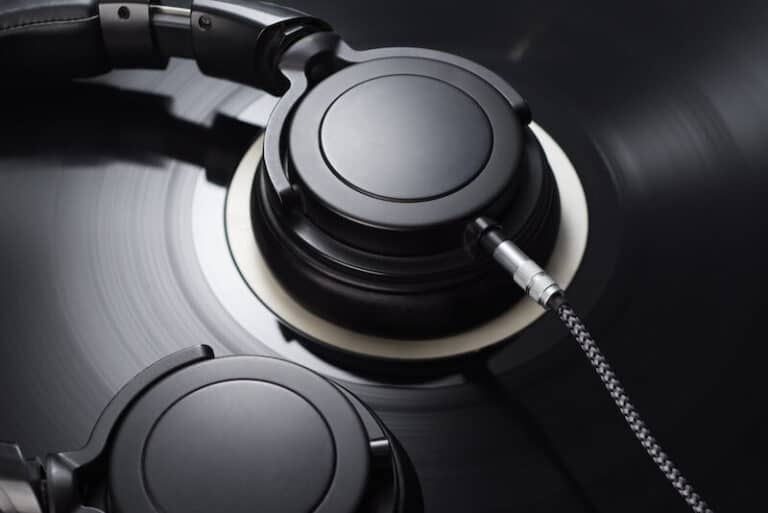Headphone Unplugged: 50 Lesser-Known Facts That Will Amaze You
We conduct independent testing and research of products, so you can make an informed decision before making a purchase. And when you do decide to make a purchase through our links, please note that we may earn a commission, but this does not affect the honesty of our reviews.
From the classic to the cutting-edge, headphones have come a long way since their inception. But did you know that the first patent for headphones wasn’t filed until 1910, or that some headphones are designed to detect when you’re asleep?
This blog post unplugs the myths and uncovers 50 lesser-known facts about headphones that will amaze even the most hardcore headphone enthusiasts! From strange design features to hidden features, get ready to have your mind blown by the amazing history and development of headphones.
Facts About Headphones
1. The first-ever headphones were invented in 1910 by Nathaniel Baldwin, who handcrafted them in his kitchen and sold them to the U.S. Navy.
2. The term “headphone” comes from the early design where the speakers were positioned near the head (around the ears) rather than being held up to the ear.
3. The world’s largest headphones were created by a Canadian artist named Dallyn Rule for Mini Maker Faire in Vancouver.
4. The most expensive pair of headphones ever created is the Beats Pro by Dr. Dre X Graff, which was priced at $750,000.
5. The Beats by Dre brand, founded by Dr. Dre and Jimmy Iovine, was acquired by Apple Inc. in 2014 for a whopping $3.2 billion.
6. The concept of noise-canceling headphones was first developed for pilots in the aviation industry to block out engine noise during flights.
7. The world’s smallest headphones were created by the Japanese Fischer Audio called Dream Catcher. They measured just 3.8mm in diameter.
8. The popular “Walkman” portable cassette player, introduced by Sony in 1979, played a significant role in popularizing headphones among the general public.
9. The introduction of the MP3 format and the subsequent rise of digital music significantly influenced the design and popularity of headphones.
10. The frequency response of headphones refers to the range of frequencies they can reproduce accurately. Human hearing typically spans from 20 Hz to 20,000 Hz, and headphones are designed to cover this range.
11. The world’s first commercial in-ear headphones, known as earbuds, were introduced by Ernest Mercadier in 1891.

12. The term “dB” (decibel) is commonly used to measure headphone sensitivity. Higher dB values indicate greater sensitivity, meaning headphones can produce louder sounds at lower input levels.
13. The highest-selling headphones of all time are the white earbuds that come with Apple’s iPods and iPhones. They have become an iconic symbol of the brand.
14. The wireless headphone market experienced significant growth with the introduction of Bluetooth technology, enabling seamless audio streaming without the need for cables.
15. The introduction of Planar Magnetic technology in headphones revolutionized the audio industry by providing precise sound reproduction and eliminating certain distortions.
16. The headband style of headphones was inspired by the headgear used by telephone operators in the early 20th century, which held the receivers in place over the ears.
17. The global market for headphones is projected to reach a value of over $20 billion by 2026, driven by advancements in audio technology and increasing demand for wireless and noise-canceling features.
18. The electrostatic headphones, known for their high-fidelity audio reproduction, require a specialized amplifier called an energizer to power them due to their unique operating principle.
19. The concept of bone conduction headphones emerged as an alternative for those with hearing impairments. They transmit sound vibrations through the bones of the skull directly to the inner ear.
20. The shape and size of ear cups in headphones can affect comfort and sound quality. Open-back headphones allow airflow and offer a more natural soundstage, while closed-back headphones provide better noise isolation.
21. The concept of surround sound headphones emerged to recreate a multi-dimensional audio experience by using advanced sound processing algorithms and multiple drivers.
22. The term “cans” is sometimes used as slang for headphones, which is believed to have originated from the early days of radio broadcasting when broadcasters wore large, can-shaped earphones.
23. The world’s first wireless headphones were introduced in the 1960s. They used radio waves to transmit audio signals.
24. The impedance of headphones refers to their electrical resistance and can impact audio quality and compatibility with various devices. Low-impedance headphones are easier to drive and work well with portable devices, while high-impedance headphones require more power and are often used with dedicated audio equipment.
25. Virtual reality (VR) headphones are designed specifically for immersive audio experiences in virtual reality applications, enhancing the sense of presence and spatial audio effects.
26. The famous rapper and producer Dr. Dre played a significant role in popularizing high-quality headphones through the Beats by Dre brand, which emphasized both sound quality and fashionable design.
27. In-ear monitors (IEMs) are a type of headphones commonly used by musicians and performers on stage to hear themselves or other musicians clearly in live settings.
28. The sensitivity of headphones, measured in decibels per milliwatt (dB/mW), indicates how efficiently they convert electrical signals into sound. Higher-sensitivity headphones require less power to produce sound at a given volume.
29. The headphone jack on electronic devices, such as smartphones and laptops, is often referred to as a “3.5mm jack” or “mini-jack” due to its standardized diameter of 3.5 millimeters.
30. Some specialized headphones, known as bone conduction headphones, bypass the eardrums and transmit sound vibrations directly to the inner ear by vibrating the bones of the skull, allowing users to hear ambient sounds while enjoying audio.
31. The concept of active noise cancellation (ANC) in headphones was first developed by Dr. Amar Bose in 1989. He applied the technology to create the iconic Bose QuietComfort series.
32. The headphone market has seen a rise in sustainable and eco-friendly options. Some companies are using recycled materials, biodegradable components, and packaging made from recycled materials to reduce their environmental impact.
33. The largest headphones manufacturer in the world is China-based company, Goertek Inc. They produce headphones for various brands and are known for their mass production capabilities.
34. The use of headphones for gaming has grown exponentially with the rise of e-sports. Gaming headsets often come equipped with features like surround sound, built-in microphones, and customizable RGB lighting.
35. High-end headphones can be quite expensive, but there are also budget-friendly options that offer decent sound quality and features. It’s not always necessary to spend a fortune to get a good listening experience.
36. Some headphones come with built-in heart rate monitors and fitness tracking features, allowing users to monitor their workouts and performance while enjoying music. For example this JBL Under Armour Sport Wireless In-Ear Headphones with Heart Rate Monitor

37. The adoption of voice assistants like Siri, Google Assistant, and Alexa has led to the integration of voice control features in headphones, allowing users to make calls, control playback, and interact with their smart devices hands-free.
38. Headphones have become fashion accessories, with many brands collaborating with fashion designers and celebrities to create limited-edition or stylish headphone collections.
39. The first-ever commercial headphones were initially developed for telephone switchboard operators to improve call quality and provide hands-free communication.
40. Noise-induced hearing loss is a significant concern with prolonged and excessive headphone use at high volume levels. It’s important to practice safe listening habits and take breaks to protect your hearing.
41. The concept of bone-conduction headphones has been around for over a century. They were initially developed to aid individuals with hearing impairments, allowing sound to be transmitted through vibrations directly to the inner ear.
42. The headphone market has seen a surge in true wireless earbuds, which are completely wire-free and come in a compact form factor. These earbuds use Bluetooth technology to connect to devices.
43. The term “audiophile” refers to individuals who have a deep passion for high-quality audio reproduction. Audiophiles often invest in premium headphones and audio equipment to achieve the best sound experience.
44. The headphone industry has witnessed a rise in customizable options, allowing users to personalize their headphones with various color options, interchangeable ear cups, and customizable headband designs.
45. The popularity of open-back headphones has grown among audiophiles due to their spacious soundstage and natural sound reproduction. They allow sound to leak in and out, providing a more immersive listening experience.
46. The Grammy Awards introduced the category of “Best Surround Sound Album” in 2005, recognizing the importance of spatial audio and immersive sound experiences, often enjoyed through high-quality headphones.
47. The rise of gaming headphones has led to the development of specialized features such as haptic feedback, 3D audio, and customizable sound profiles tailored for gaming environments.
48. The world’s largest headphone jack was created in 2019 as part of an art installation in Washington, D.C. It measured 31 feet tall and was made from recycled materials.
49. Some headphones offer active sound monitoring, which allows users to hear their voice or external sounds while listening to audio. This feature is especially useful for musicians during live performances or studio recording sessions.
50. The “Harman curve” is a popular frequency response target used by many headphone manufacturers. It aims to provide a balanced and pleasing sound signature by emphasizing certain frequencies based on human hearing preferences.
Conclusion
Who knew headphones could be so fascinating? From obscure design features to hidden functions, this blog post uncovers lesser-known facts that will amaze even the most hardcore headphone enthusiasts!
Our Mission: At AudioInspects, we are dedicated to providing the most comprehensive and authentic reviews of audio equipment on the market. We conduct independent testing and research of products, so you can make an informed decision before making a purchase. Our mission is to help you find the best audio equipment to improve your listening experience. So trust us to deliver the most reliable recommendations and advice.
Disclosure: When you do decide to make a purchase through our links, please note that we may earn a commission, but this does not affect the honesty of our reviews. You can read our affiliate disclosure in our Disclosure.






